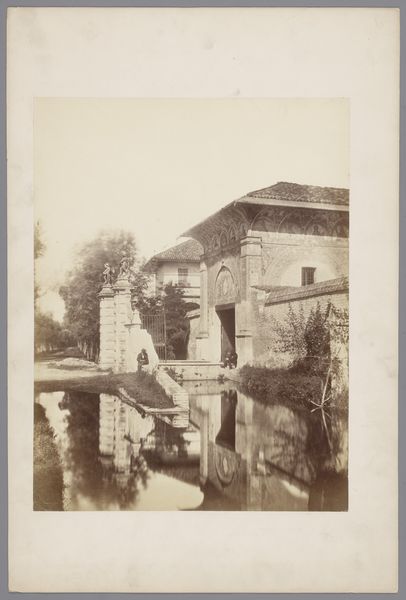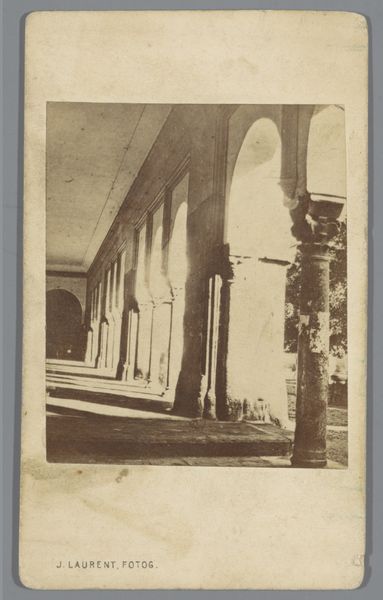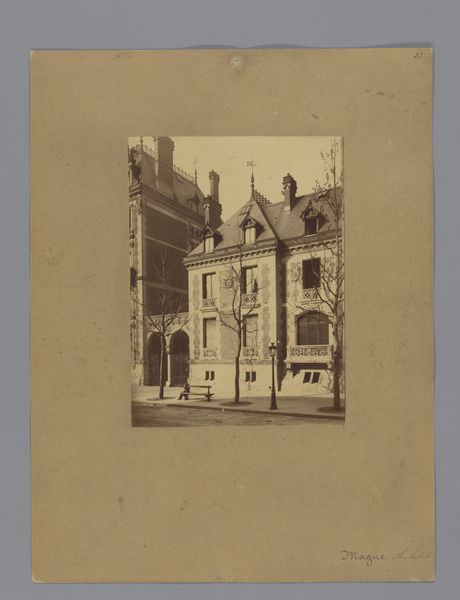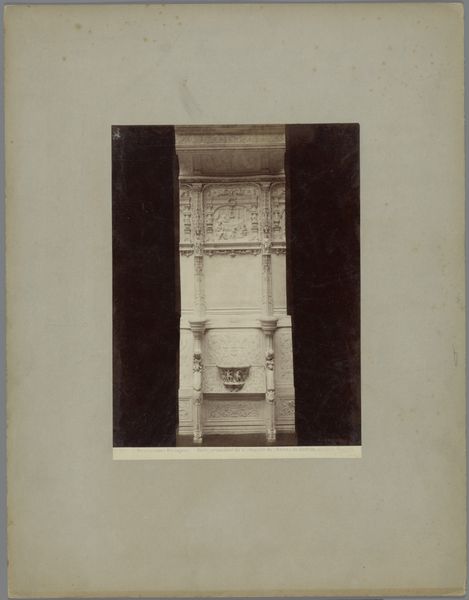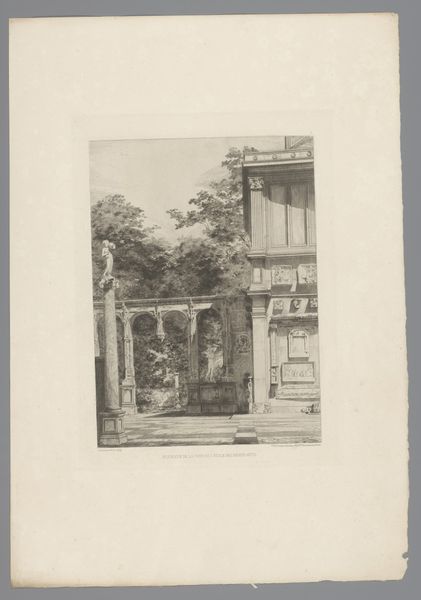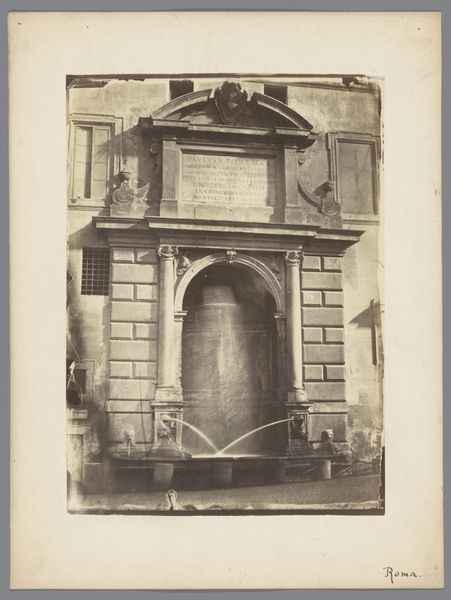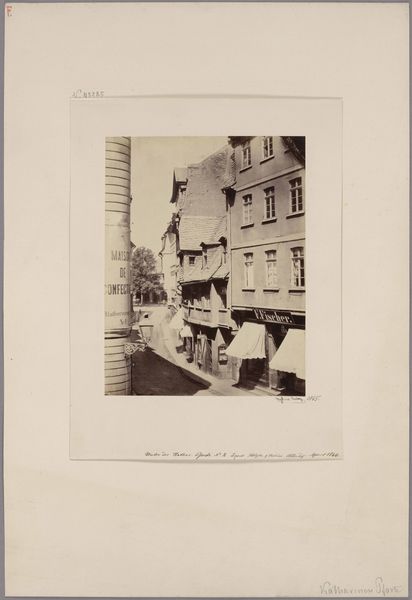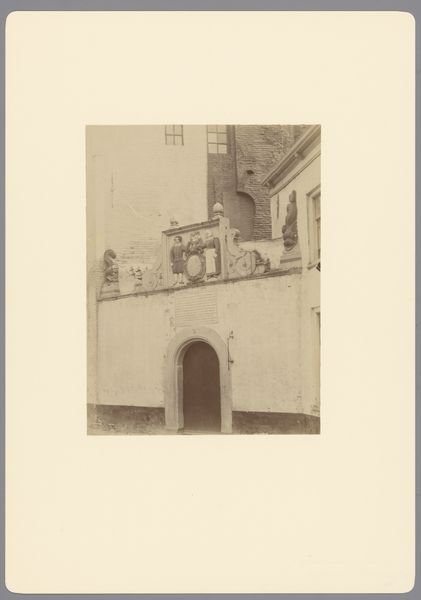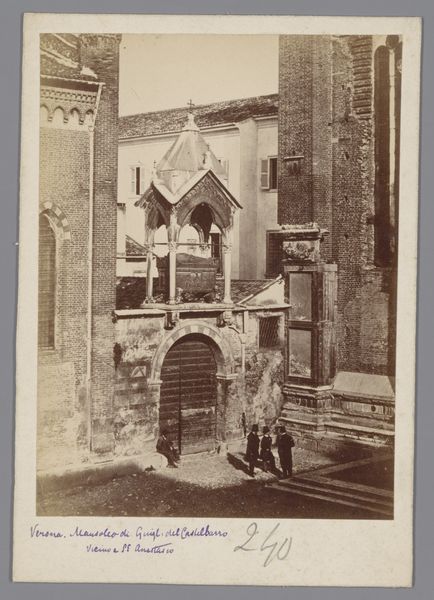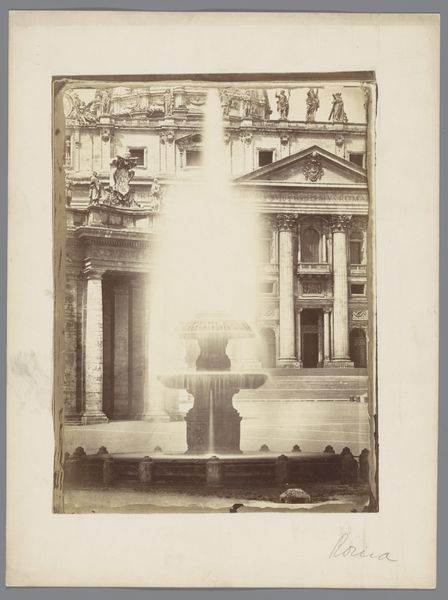
photography, albumen-print, architecture
#
landscape
#
photography
#
19th century
#
cityscape
#
history-painting
#
albumen-print
#
architecture
Dimensions: height 504 mm, width 355 mm
Copyright: Rijks Museum: Open Domain
Editor: This is "Vier gezichten op het kasteel van Azay-le-Rideau," taken sometime between 1850 and 1900, an albumen print featuring four different views of the Château d'Azay-le-Rideau. The composition seems really fragmented, almost like a postcard, but also architectural documentation. How do you interpret this compilation? Curator: The fragmented composition is intriguing, isn't it? These photographic surveys of architecture were products of their time, participating in the 19th-century projects of cataloging and archiving the world around them, often from a colonial perspective. I see here not just a straightforward architectural record, but a negotiation between the photographer’s vision, and the implicit power dynamics of looking at these sites of European nobility. Each of these carefully composed vignettes creates a certain… distance, even in their close-up detail. Editor: Distance? Curator: Yes, think about the architecture, and whose gaze it serves. Were these images intended to celebrate a national heritage, or to serve some kind of power structure? And who has the privilege of viewing this castle in all its detail? Do you think the way it's presented in four parts impacts the viewer’s experience of the Chateau? Editor: Definitely. Showing just details, it’s almost…deconstructed. Like the photographer is trying to show you something more than just the Chateau's beauty. Maybe even questioning its imposing presence? Curator: Precisely. By focusing on details like the stonework, its relationship to the surrounding water, or interior details, it subtly disrupts any singular, authoritative view. It pushes us to consider the structure not as a static monument, but as something that can be taken apart, re-evaluated. I wonder if there is also some commentary on the decline of the aristocracy built into it, if we are encouraged to think of ruins or of what remains. Editor: I didn't initially consider it that way, but seeing it now, I think these visual choices highlight the themes of history, power, and the act of looking itself. Thank you for making me aware of it. Curator: The real thanks go to the artist who encourages such questions through this work!
Comments
No comments
Be the first to comment and join the conversation on the ultimate creative platform.
